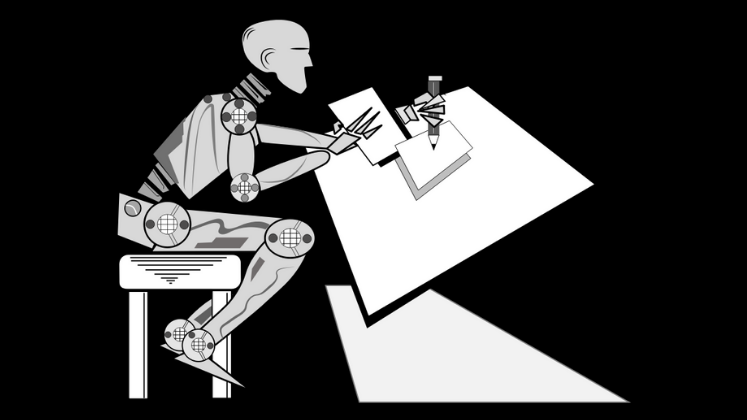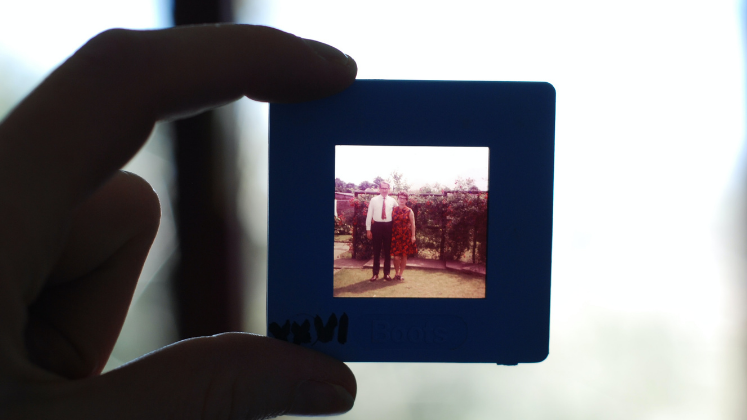Current images of AI – widely used and available in stock libraries – are dominated by tropes such as white humanoid robots, blue backgrounds, glowing brains and science fiction imagery. Research into narratives as forms of sense-making AI has shown that these can impede the public understanding of AI, mask human agency, and reinforce damaging stereotypes. Dr Jenn Chubb and AI policy researcher Raziye Buse Çetin, appointed advisors to the Better Images of AI project, make the case to imagine more helpful visual representations of AI to improve science communication.
Bring to mind the last image or depiction of AI you saw in the media or on screen. You would be forgiven if what comes up involves humanoid robots, glowing brains, outstretched robot hands and blue backgrounds.
Consider the way the recent claim by a Google employee that the LaMDA AI is sentient was reported. Scattered across the media were images reinforcing dominant narratives about robot uprising. Most commonly these were of the Terminator. For those of us researching AI, these kinds of tropes can divert and distract, distorting public perception, potentially hindering knowledge exchange. Whether researchers are looking to communicate directly to the public, to policy bodies or other researchers, images are often used alongside their papers or articles and often, current stereotypes are not just overworked, they are also unhelpful. 
What’s the problem with current tropes?
There is a growing momentum of research into AI narratives and the implications of AI. Prominent voices in AI narratives research in the UK such Stephen Cave, Kanta Dihal and Sarah Dillon and institutions such as the Royal Society suggest that socio-technical imaginaries should include an explicit account of the important role that narratives play, and assert the need for further investigation into the ways narratives impact upon the public. In a forthcoming article in AI & Society, author Jenn Chubb adds to this critical line by focusing on novel, nuanced and niche AI narratives which also suggests a need to consider other narratives components, such as the sonic framing of AI where music and soundtracks can manipulate and distort perception of AI in storytelling like forms of documentary.
 What is clear is that futuristic or science-fiction-inspired images of AI hinder the understanding of the technology’s already significant societal and environmental impacts. Images relating machine intelligence to human intelligence set unrealistic expectations and misstate the capabilities of AI. Images representing AI as sentient robots mask the accountability of the humans actually developing the technology, and can suggest the presence of robots where there are none. Such images potentially sow fear, and research shows they can be laden with historical assumptions about gender, ethnicity and religion. Finding alternatives can be difficult. That’s why, a non-profit collaboration, are researching, creating, curating and providing Better Images of AI.
What is clear is that futuristic or science-fiction-inspired images of AI hinder the understanding of the technology’s already significant societal and environmental impacts. Images relating machine intelligence to human intelligence set unrealistic expectations and misstate the capabilities of AI. Images representing AI as sentient robots mask the accountability of the humans actually developing the technology, and can suggest the presence of robots where there are none. Such images potentially sow fear, and research shows they can be laden with historical assumptions about gender, ethnicity and religion. Finding alternatives can be difficult. That’s why, a non-profit collaboration, are researching, creating, curating and providing Better Images of AI.
Better Images of AI
Better Images of AI is a non-profit collaboration of organisations and individuals working together through various projects to inspire and make freely available more realistic, specific, and inclusive images of AI. It explores ideas on how to imagine and create more helpful visual representations of AI through the following methods:
- Pooling the experience and expertise of a wide range of relevant stakeholders
- Researching requirements and approaches for creating ‘better’ images
- Curating and commissioning ‘better’ images
- Developing methodology for briefing and originating ‘better’ images
- Showcasing ‘better’ images and the approaches used to create them
- Stimulating debate around perceptions of AI
The project has started an inspiration repository of “better” images which are free to download and use under a Creative Commons attribution license, and which are being used globally. Researchers, technologists, journalists and the public are encouraged to use them.
Each image can be downloaded for free. See the image below: Quantified Human, by Alan Warburton. The project ensures artists and donors of images are credited via Creative Commons 4.0 licenses and alt text is provided to encourage people to consider accessibility. This way people can either learn more about AI or be able to choose the most relevant images, which improves understanding across AI communicators.
The role of AI imagery in science communication
With governments all over the world publishing aspirations for AI – including the UK’s recent National AI Strategy – it is clear that narratives and their features can play a critical role in helping us separate hype from accurately representing the current state of the technology. For this reason, narrative responsibility, or what we might refer to as responsible storytelling, is an emerging field of AI ethics – suggestive of a responsibility to do better science communication.
The role of AI imagery in science communication becomes clear whether you are directly researching AI or not, how universities portray AI and related technologies impacts scholars, marketing and impact managers, students and public understanding. Indeed, in a previous post, the author discussed the role AI might have directly in the research process itself. Funders require researchers to consider the impact of their research for the purposes of funding and assessment. So too, the civic role of universities to produce impact to society requires researchers to think mindfully about how they represent their work, who benefits and why. From the use of humanoid robots in the hallways at open days to marketing imagery on researcher blogs and think pieces, it all builds a certain perception. It becomes paramount then to consider how the research community can support the initiative for better images of AI.
narratives and their features can play a critical role in helping us separate hype from accurately representing the current state of the technology.
One opportunity to input directly into the requirements for and ideas on producing more specific, transparent, accurate and inclusive images is to contribute to an AHRC funded research project undertaken by Leverhulme Centre for the Future of Intelligence at the University of Cambridge. Led by Dr Kanta Dihal, the aim is to build a network aimed at dismantling dangerous misconceptions and misinformation about artificial intelligence (AI) and provide technologists, businesses, and other stakeholders with research-informed guidance on improving the diversity, inclusivity and accuracy of visual portrayals of AI. This project is currently in a workshop phase which brings AI technical experts, ethicists and communicators together with creatives to test existing data sets of new images, and brainstorm more helpful ways of visually representing AI.
Any stakeholders in the communication of AI, from arts and humanities, social sciences, technology or communications backgrounds are invited to apply to join the workshops, join the network and help to diversify, inspire and specify better images.
Going forward
There is more work to be done and we are learning all the time. The project Community blog focuses on showcasing relevant explorations from the wider community with a stake in “better” images: AI narratives, science and technology communication, artistic approaches, and related research and projects. Researchers are invited to join in the conversation to curate better images of AI, perhaps run student competitions and generally get involved.
Join the conversation @ImagesofAI
The content generated on this blog is for information purposes only. This Article gives the views and opinions of the authors and does not reflect the views and opinions of the Impact of Social Science blog (the blog), nor of the London School of Economics and Political Science. Please review our comments policy if you have any concerns on posting a comment below.
Featured Image Credit: Alan Warburton / © BBC / Better Images of AI / Plant / CC-BY 4.0 via Better Images of AI.









3 Comments